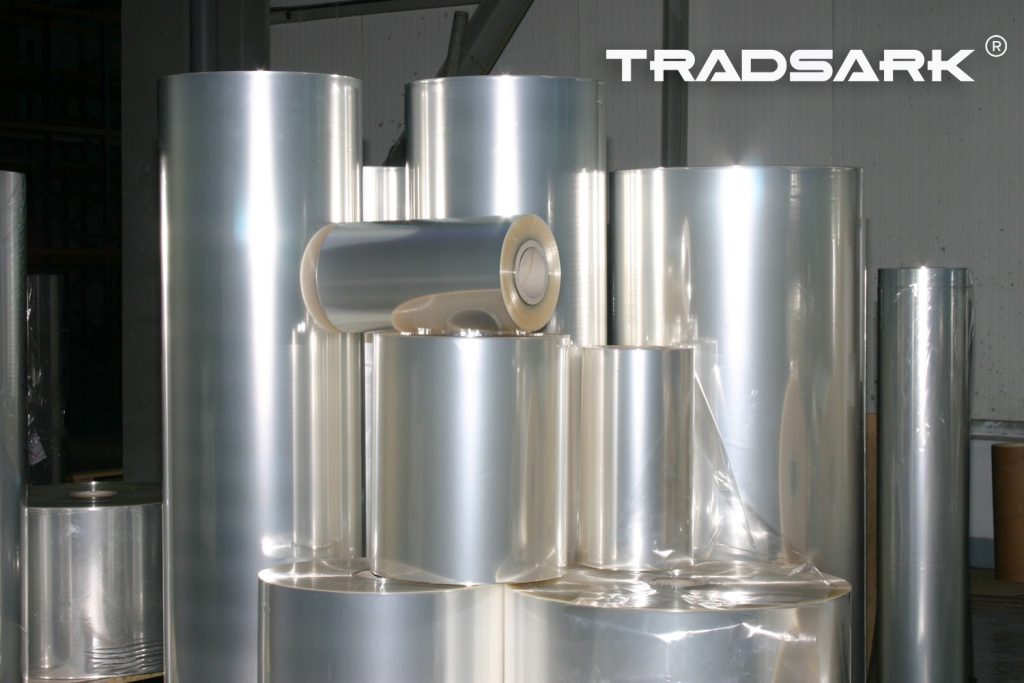BOPET vs BOPP Film: Comprehensive Guide for Packaging Professionals
Introduction
BOPET (Biaxially Oriented Polyester) and BOPP (Biaxially Oriented Polypropylene) films are essential in modern packaging, offering protection, durability, and visual appeal. Despite both being biaxially oriented films, they differ in chemical composition, barrier performance, mechanical strength, thermal resistance, and industrial applications. Understanding these differences is critical for packaging designers, manufacturers, and distributors who want to optimize product quality and reduce costs.
China has become a global hub for BOPET and BOPP film suppliers, offering advanced, high-quality films for food, beverage, medical, electronics, and industrial packaging. Leading manufacturers provide metallized, colored, transparent, and biodegradable films to meet global demand.
1. Material Composition and Molecular Structure
BOPET Film:
- Polyester-based, made from polyethylene terephthalate (PET).
- Offers high tensile strength, excellent dimensional stability, and resistance to stretching or shrinkage.
- Naturally transparent with a smooth surface, suitable for high-quality printing, lamination, and metallization.
BOPP Film:
- Polypropylene-based, lightweight and flexible.
- Moderate barrier performance, often enhanced via metallization or lamination.
- Resistant to moisture and chemical exposure, ideal for flexible packaging.
2. Barrier and Protective Properties
- BOPET: Excellent barrier against oxygen, moisture, and aroma; ideal for sensitive food, beverages, and pharmaceutical packaging. Metallized BOPET further enhances barrier performance.
- BOPP: Provides moderate barrier properties, commonly used for snack wrappers, candy packaging, and industrial films. Metallized or laminated BOPP improves protection while maintaining flexibility.
- Barrier performance influences shelf life, product safety, and visual quality.
3. Mechanical and Thermal Performance
- Tensile Strength: BOPET films resist tearing, stretching, and deformation under stress, while BOPP is more flexible and stretchable.
- Thermal Resistance: BOPET withstands high temperatures (up to 150°C), suitable for hot lamination and industrial packaging. BOPP films have moderate thermal stability, ideal for ambient or refrigerated products.
- Dimensional Stability: BOPET maintains shape during storage and transport, whereas BOPP adapts better to flexible packaging and high-speed machinery.
4. Optical, Printing, and Decorative Features
- BOPET Films: High gloss, transparency, and smooth surface; excellent for labels, decorative laminates, and premium packaging.
- BOPP Films: Clear, white, or metallized; supports multi-color printing, hot stamping, embossing, and lamination.
- Both film types enhance the visual appeal of packaging while offering functional protection.
5. Cost, Production, and Sustainability
- BOPET: Higher production costs due to advanced extrusion, biaxial stretching, and metallization processes. Provides long-term durability and premium appearance.
- BOPP: Cost-effective, fast to produce, widely adopted for high-volume applications. Easy to recycle and increasingly produced in biodegradable formats.
- Sustainability is a growing trend: Chinese suppliers are investing in eco-friendly BOPET and BOPP films, using renewable energy and recyclable materials.
6. Applications Across Industries
BOPET Applications:
- High-barrier food packaging, beverage labels, laminated films, electronics insulation, industrial packaging, flexible graphic arts films, pharmaceutical packaging.
BOPP Applications:
- Snack and candy wrappers, heat-sealable bags, adhesive tapes, agricultural mulch films, flexible packaging for industrial goods.
These applications demonstrate that while both films share the packaging sector, their performance advantages define their optimal use cases.
7. Advantages and Limitations
BOPET Advantages:
- Superior barrier against oxygen, moisture, and aroma
- High tensile strength and tear resistance
- Excellent dimensional stability and thermal resistance
BOPET Limitations:
- Higher cost
- Requires specialized processing equipment
BOPP Advantages:
- Flexible, lightweight, and easy to process
- Cost-efficient for large-scale production
- Can be metallized or laminated to improve performance
BOPP Limitations:
- Moderate barrier properties
- Lower heat resistance than BOPET
Conclusion
Understanding the differences between BOPET and BOPP films is essential for packaging professionals, manufacturers, and distributors. BOPET excels in barrier properties, mechanical strength, and premium visual quality, while BOPP offers cost-efficiency, flexibility, and versatility for mass-market packaging. Selecting the right film ensures product protection, aesthetic appeal, and compliance with global packaging standards.


